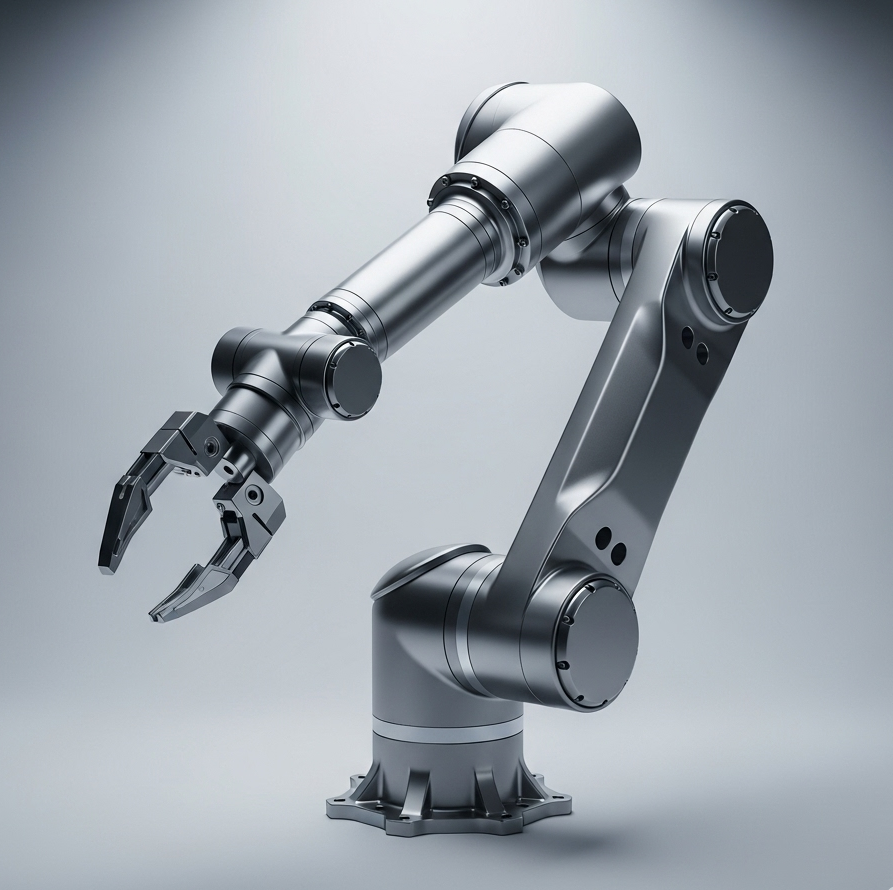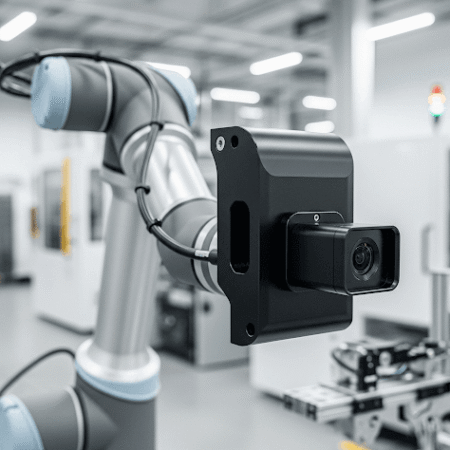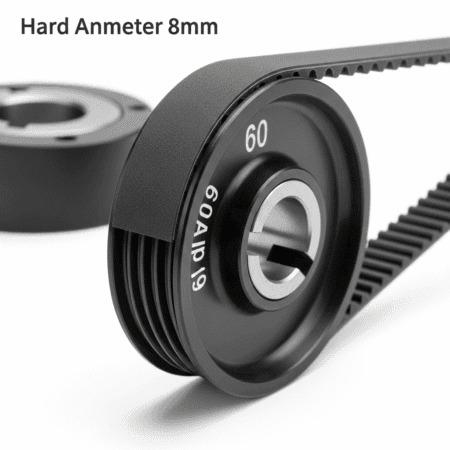Description
Robot Arm Parts: The Structural Foundation of Automation
At ly-machining, we engineer the skeleton of modern robotics. The robot big arm (upper arm) and robot small arm (forearm) are fundamental robot parts that dictate a machine’s reach, payload capacity, and overall rigidity. Our expertise lies in applying advanced CNC machining to produce these components with the utmost precision, ensuring peak performance in any automated system.
These are not simple structural elements; they are highly complex robot parts that must be both lightweight and incredibly strong. We utilize specialized CNC milling techniques to transform raw blocks of high-grade material into perfectly formed robotic limbs, complete with integrated mounting points, internal passages for cabling, and bearing surfaces that meet exacting tolerances.
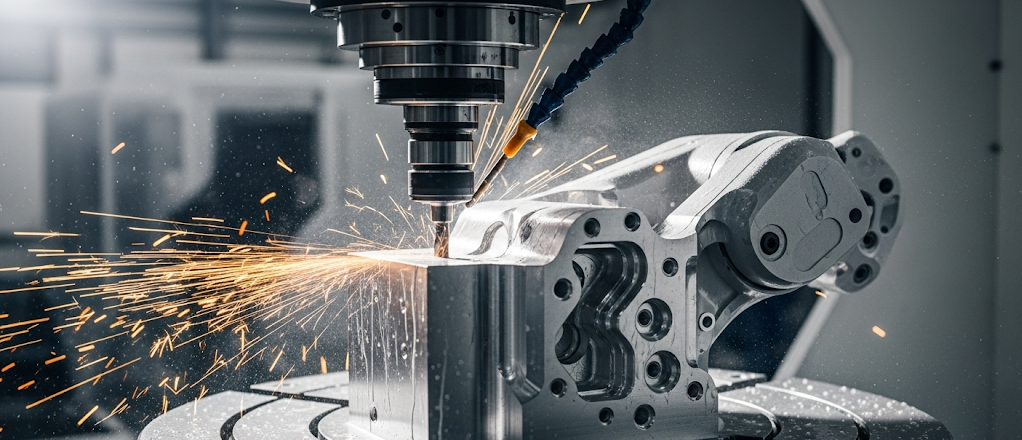
The Engineering Challenge in Machining Robot Arm Parts
The CNC machining of a robot big arm or robot small arm presents significant engineering challenges. The primary difficulty lies in managing the high length-to-width ratio of these parts. This geometry makes them susceptible to vibration and deflection during the CNC milling process, which can compromise straightness and dimensional accuracy.
Furthermore, these robot parts demand a delicate balance between removing large volumes of material to reduce weight and maintaining structural integrity, especially when creating thin walls and deep pockets. Achieving the required tight tolerances on pivot points and mounting interfaces over a long, slender part requires not just advanced machinery, but a deep, practical understanding of machining dynamics.
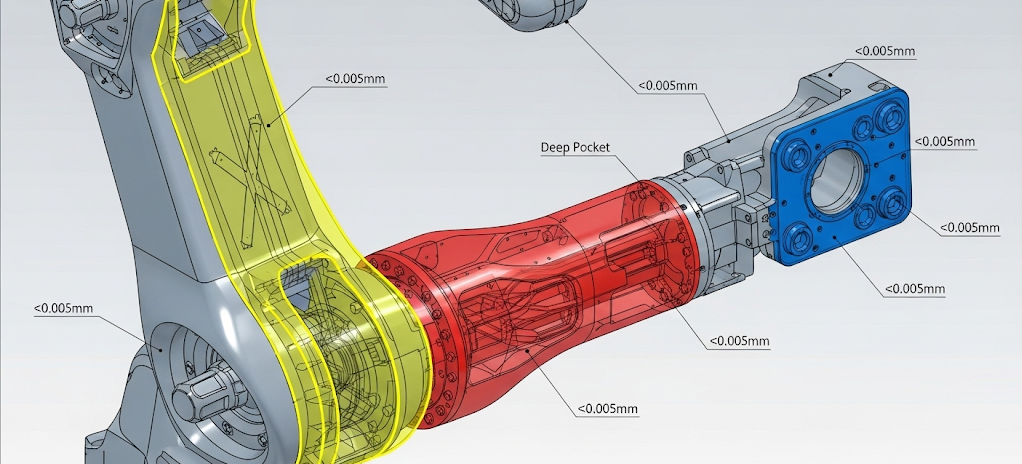
Our CNC Machining Process for Robot Arms
The ly-machining process for every robot big arm and robot small arm is built on a foundation of meticulous planning. We begin with a comprehensive Design for Manufacturability (DFM) analysis to optimize the part for CNC machining. We then employ multi-axis CNC machining centers, allowing us to access multiple faces of the component in a single clamping, which is critical for maintaining the precise relationship between features.
Our CNC milling strategy involves intelligent roughing passes to remove material efficiently while minimizing stress in the workpiece. We use specialized fixtures and supports to eliminate vibration and ensure stability throughout the machining of these long robot parts. Finishing passes are executed with high-precision tools to achieve the specified surface finish and dimensional accuracy required for smooth assembly and operation.
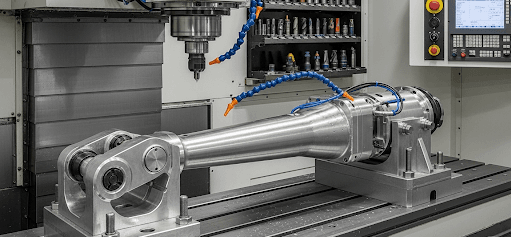
Superior Performance Through Precision CNC Milling
The result of our rigorous CNC machining process is a set of robot parts that deliver uncompromising performance. A perfectly machined robot big arm and robot small arm provide the rigidity necessary for high-speed, high-payload operations, minimizing deflection and vibration for greater endpoint accuracy.
The superior surface finish and tight tolerances achieved through our CNC milling ensure seamless integration with joints, motors, and end-effectors. This level of precision reduces assembly time, eliminates the need for manual adjustments, and extends the operational life of the entire robotic system. With ly-machining, you get robot parts that are built for reliability and peak performance.
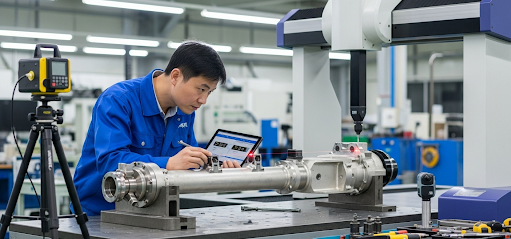
Material & Performance Comparison for Robot Parts
The choice of material is critical in robotic applications. The following table compares two common aluminum alloys we use for CNC machining robot arms, showcasing why a specific choice can impact performance.
Case Study: Upgrading a Pick-and-Place Robot Arm
A client in the logistics industry was experiencing accuracy issues with their pick-and-place robots. The existing robot small arm was deflecting under load, causing positioning errors. Their supplier was unable to hold the required straightness tolerance using their standard CNC machining methods.
ly-machining took on the project. We recommended a switch from Aluminum 6061 to 7075 to increase stiffness. We then designed a custom fixture and developed a specialized CNC milling toolpath that minimized cutting forces. Our process achieved a straightness tolerance of 0.05 mm over a 1200 mm length, a 4x improvement. This upgrade eliminated the positioning errors and increased the robot’s operational speed by 15%.

FAQ
1. How do you maintain straightness when CNC machining a long “robot big arm”? From an engineering perspective, maintaining straightness over long parts is a core challenge. We solve this through a combination of methods: first, using properly stress-relieved material; second, designing custom, multi-point support fixtures to prevent sag and vibration during CNC milling; and third, employing specific machining strategies, like machining both sides of the part in stages to balance internal stresses. Finally, we verify the result with laser trackers or large-scale CMMs.
2. What is the typical surface finish you can achieve on robot parts? For most functional surfaces on a robot big arm or robot small arm, we typically achieve a surface finish of Ra 1.6 μm through our standard CNC machining process. For critical mating surfaces, bearing bores, or areas requiring an exceptionally smooth finish, we can easily achieve Ra 0.8 μm or better through specialized CNC milling techniques and tooling.
3. Can you machine internal features or channels inside the robot arm for wiring and pneumatics? Absolutely. This is a common requirement for modern robot parts. Our 5-axis CNC machining centers are ideal for creating complex internal channels and through-holes. We can machine smooth, contiguous passages that protect cables and hoses from wear during robot articulation, ensuring a clean design and reliable operation.

